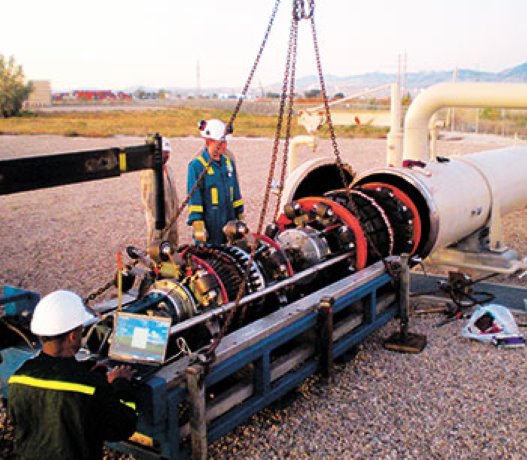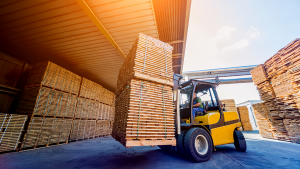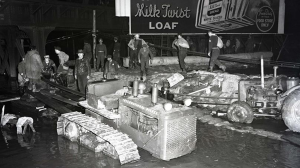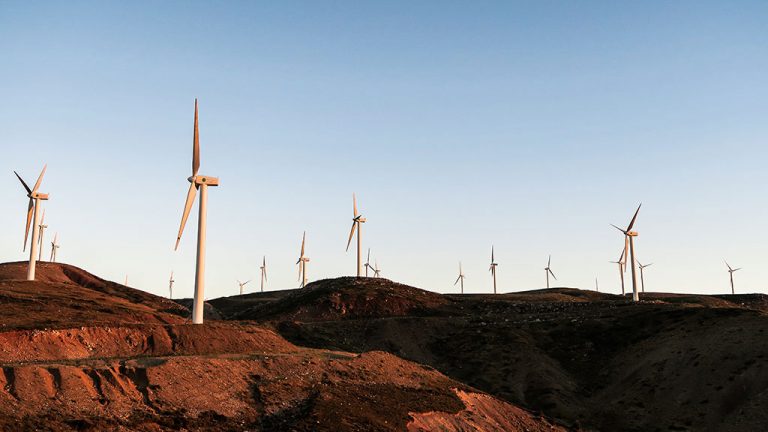Canada’s energy transmission pipeline companies, which operate 115,000 kilometres of pipeline, face a continuing challenge: How to keep the flow of liquid petroleum and natural gas moving to their customers, while at the same time following the mandate of regulators to monitor and inspect their pipes to make sure they’re in no danger of failure.
Canada's energy transmission pipeline companies, which operate 115,000 kilometres of pipeline, face a continuing challenge: How to keep the flow of liquid petroleum and natural gas moving to their customers, while at the same time following the mandate of regulators to monitor and inspect their pipes to make sure they're in no danger of failure.
The companies, which in 2012 moved about 1.2 billion barrels of liquid petroleum products and 5.1 trillion cubic feet of natural gas, are demanding from their suppliers an increasing number of high-tech tools to monitor and inspect their pipes.
“The operators keep asking us for better technology all the time,” said Frank Sander of Calgary-based Baker Hughes Pipeline Inspection Services.
“That’s what drives our business.”
Baker Hughes is one of a number of companies in Canada that develop in-line inspection (ILI) tools for monitoring and inspecting pipelines.
One of the tools these companies has developed is a pipeline inspection gauge, or “pig.”
The pigs are inserted into a “pig launcher’,” or launching station, a funnel-shaped Y-section in the pipeline.
The launcher is then closed and the pressure-driven flow of the product in the pipeline pushes the pig down the pipe until it reaches the receiving trap, called a pig catcher, or receiving station.
An important feature of the pigs is that they can operate without stopping the flow of oil or gas in the pipeline.
The current generation of pigs – “smart pigs” – contain instruments that include electronics and sensors that collect various forms of data during their trip through the pipeline.
As they swim down the pipe, the smart pigs look for cracks, weld defects and signs of surface pitting and corrosion. Some use electromagnetic acoustic transducers to detect defects, which are also called anomalies.
Caliper pigs can measure the roundness of the pipeline to determine areas of crushing or other deformations.
The pigs record data on defects and their position in the pipe, using gyroscope-assisted tilt sensors and odometers, and store it for future retrieval and analysis.
The electronics are sealed to prevent the oil or gas from leaking into them.
Power for the electronics is provided by on-board batteries, which are also sealed.
Methods of data recording include analog tape, digital tape and, more modern digital units, solid-state memory.
Vectra Gemini, which performs multiple inspections in a single run, is Baker Hughes’ latest generation of in-line inspection service.
“They maintain production capacity and revenue while acquiring accurate pipeline integrity data,” said Sander.
The latest iteration of Vectra Gemini is being released in 2014.
“It will feature higher resolution sensors that can detect tiny internal pipeline defects and more closely check for anomalies along pipe seams,” he said.
One of the users of Baker Hughes’ ILI service is Calgary-based Alliance Pipeline Ltd.
The company’s system transports natural gas from northeastern B.C. and northwestern Alberta to Chicago, and also carries natural gas from the Williston Basin in North Dakota to Chicago.
“We run in-line inspection tools to look for possible anomalies in the pipe wall and to assess pipe conditions,” said Arti Bhatia, Alliance Pipeline’s director of pipeline and corridor risk management.
“The tools are launched at pipeline facilities, such as compressor stations, and are recovered at another station down the line, which can be anywhere from one kilometre to 350 kilometres away.”
Bhatia said one of the most important features of the service to Alliance, whose flow moves faster than most pipelines, is the speed control system, which slows down the speed of the tool so that it can acquire all the data the company needs.
In addition to ILI services like Vectra Gemini, there are external inspection services available to check up on what the in-line tools have uncovered. Calgary-based IPL Technologies provides a suite of services that enable pipeline operators to determine if further inspection needs to be done on any anomalies the ILI tools might have found.
Co-owner Scott Hill said the service includes a laser scanner that measures external corrosion.
“It captures the corrosion profile in a X-Y-Z coordinate system, so that the data can be used to create 3D images, calculate the remaining strength of the pipe and compare what the ILI tool detected,” he said.
It also includes software that enables the laser measurement data from the 3D laser scanner to be processed and used in imaging and the engineering assessment of the pipeline.
Other software calculates the remaining strength of the pipeline if there has been any corrosion or metal loss.











Recent Comments
comments for this post are closed